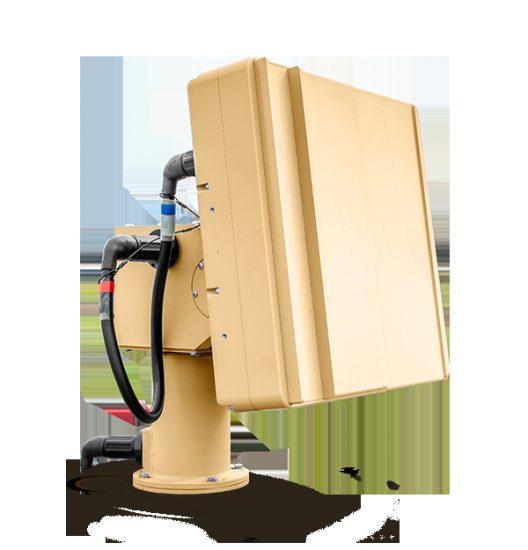Teledyne FLIR reports successful completion of a long-range drone detection system for a critical infrastructure site in Sweden. A smart slew-to-cue system, combining radar, thermal imaging and visual sensors, is designed to detect unmanned aircraft systems. Teledyne FLIR completed the project in early 2022 with integration partner CCTV-Systems AB.
According to the company press release, Teledyne FLIR provided an integrated drone detection system based on radar and a combination of thermal and visible sensors. The system uses a so-called slew-to-cue feature, where a radar will continuously scan the sky, detect the drones from a long distance and automatically point the FLIR PTZ camera to the exact position of the detected drone, whereupon the camera will continue to track the moving object using its pan/tilt mechanism.
The system includes the FLIR Ranger R8SS-3D radar, which can detect objects within a three-kilometer range and track up to 500 drone targets simultaneously, while effectively filtering bird detections. The R8SS-3D provides complete hemispherical detection and is able to monitor the coverage area four times per second, run 24/7, and detect all ground and aerial threats in virtually any climate, day and night. Radar detections are continuously tracked with the FLIR Ranger HDC MR, a high-definition mid-range surveillance system which uses thermal imaging technology to detect threats, even in conditions where visibility is poor, at night or in degraded weather conditions, such as fog, rain and clouds. Everything the 2/3 system picks up is monitored through FLIR’s Cameleon software platform. This software enables operators to control the surveillance system and share all detector information with other agencies.
Johan Eklund, Managing Director at CCTV-Systems AB said: “The company’s radar, dual thermal and visible PTZ system, and software platform are all seamlessly integrated to provide a high-performance surveillance system. And what’s more, all of the system’s components have been thoroughly tested and proven in the field.”
Detection accuracy
From the project onset the end-user’s minimum requirement was to obtain 100% accurate classification at 500 meters. Teledyne FLIR was able to far exceed this requirement thanks to thorough tuning and calibration, and to the system’s superior optics and high-performance radar capability. Teledyne FLIR also ensures that the system can operate with maximum uptime, not considered a luxury for a critical infrastructure where 24/7 situational awareness is always needed. The system makes use of an uncooled thermal sensor, which requires minimal maintenance leading to practically zero downtime. On the other hand, a cooled camera would require periodic replacement of the cooling elements. “This system is an ideal configuration for any critical infrastructure site that wants to keep its airspace free from threats and that needs 24/7 decision-making support,” says Eklund. “The system we installed in Sweden could also be used as a reliable, mid-range drone detection system for airports, refineries, nuclear plants, utilities and more.”
(Image: The FLIR Ranger HDC MR uses thermal imaging technology to detect threats in all conditions, including nighttime, low-visibility, and poor weather such as fog, rain, and clouds)
For more information visit:




